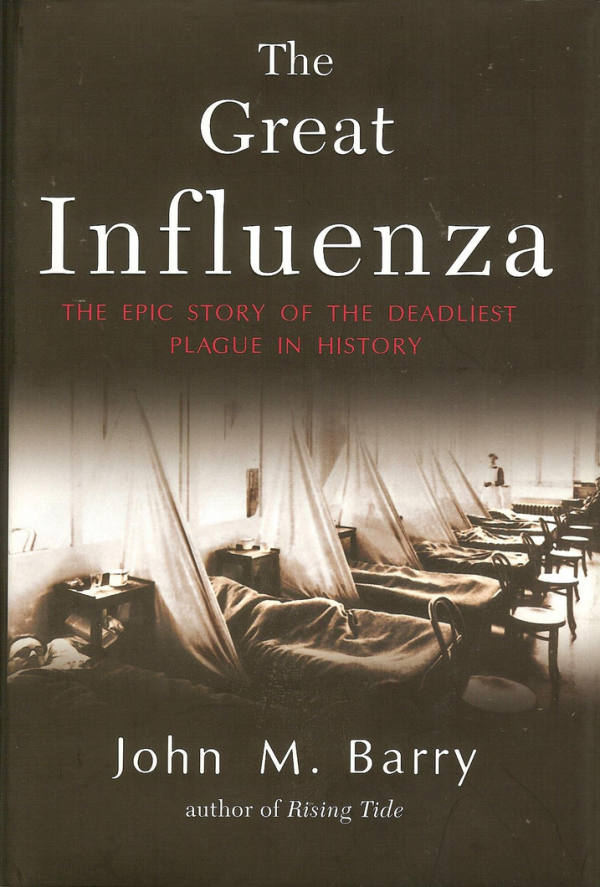FRESH AIR: John Barry, author of the 2004 book, The Great Influenza, draws parallels between today’s pandemic and the flu of 1918. In both cases, he says, “the outbreak was trivialized for a long time.” MORE
DISCOVERY MEDICINE: The great influenza pandemic began in 1918 and ended in 1920. Worldwide, the virus itself caused an estimated 20 to 100 million deaths most of which occurred between September 1918 and early 1919. In the U.S., with about 105 million people at the time, the virus killed approximately 675,000. Conventionally influenza causes its mortality among the elderly and infants due to their inadequate immune defense systems. But the 1918 pandemic was highly unusual in that approximately half of the casualties were young men and women in their 20’s and 30’s. As many as 8 to10% of all young adults may have died of influenza.
The 1918 virus killed more people in absolute numbers than any other sudden outbreak of disease in history. During the 1300’s, the Bubonic plague or Black death, a uniformly fatal bacterial infection caused by Yersinia pestis and spread by flea bites, killed a higher percentage, more than 25%, of the European population, but less in absolute numbers. In perspective, the 1918 pandemic influenza virus killed more people in 24 weeks than AIDS has so far killed in 24 years, and more people in a year than the Bubonic plague killed in a century.
The virus was endowed with unchecked brutality, virulence and malice. It brought havoc to its victim’s body, particularly the lungs. Many of those afflicted had an irrepressible cough and bleeding. Blood came out mostly from the nose, but in many cases also from the ears or from the mouth as a result of the coughing. The body was said to have ached to the point that it felt as if the bones were breaking. The skin of the patient changed color to blue, violet, or even black. At times, some Caucasian patients could not be distinguished from naturally black people. The primary cause of death was hemorrhaging pneumonia. One army report noted “fulminating pneumonia with wet hemorrhagic lungs,” “fatal in from 24 to 48 hours.”
Another unusual aspect of the 1918 influenza was that the virus struck its victims suddenly. Many people remembered precisely the moment that they first felt ill. Around the world people dropped from their horses or suddenly collapsed while walking. This didn’t mean that they collapsed at the moment they were infected. The incubation time of the influenza virus was about 24-72 hours compared to 2-10 days for the Black Death. The virus needed about 24 hours to infect a cell, replicate itself into millions of copies, and release its progeny. This did mean that after the virus had replicated, it subdued its victims in a dramatic, uncompromising fashion. Death could come rapidly. A person could appear well at one moment and collapse and die in the next moment.
In Philadelphia, priests drove horse drawn wagons, going from house to house, calling upon people who lived in horror and grief to open their doors and bring out dead bodies, like today’s calling for recycling of papers and cans. What was happening in Philadelphia was happening everywhere in the US and the world. MORE

